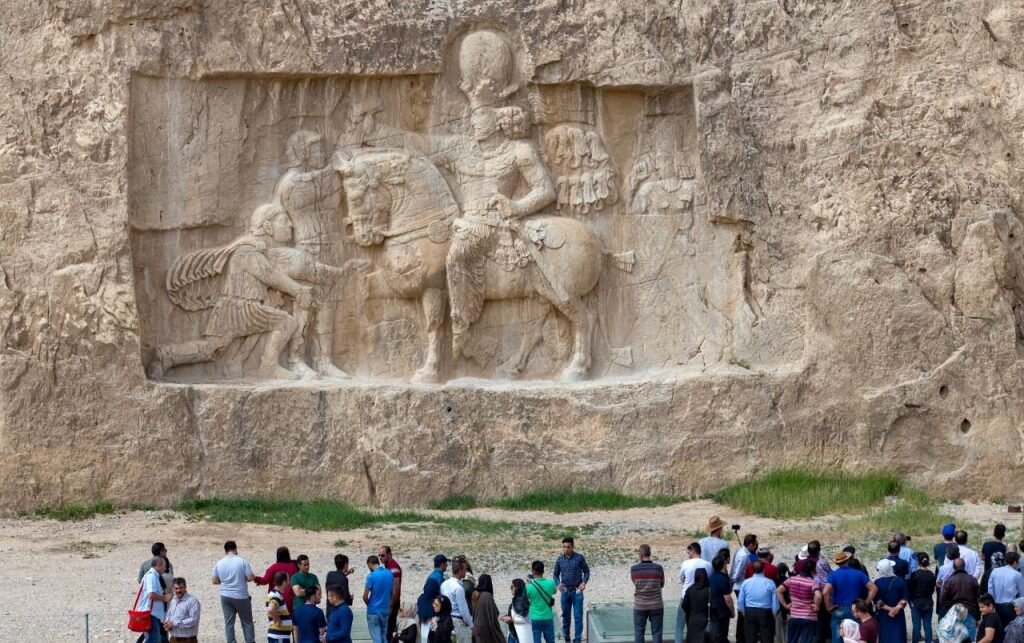Fars province sets priorities for pilgrimage, cultural tourism development

TEHRAN – The tourism chief of Fars has outlined his directorate’s priorities for bolstering pilgrimage and cultural tourism in the southern Iranian province.
Mohammad Sabet-Eqlidi emphasized that Fars province boasts an average of 37% of the country’s historical, cultural, and natural attractions. However, he pointed out that necessary attention hasn’t been directed towards stimulating demand in the tourism sector, which could drive tourism development and ultimately invigorate the tourism economy.
He made the remarks on Monday during a press conference on the thirteenth edition of the Pars International Tourism Exhibition in Shiraz, adding: “One of the primary initiatives highlighted by the directorate is to bolster pilgrimage tourism.”
Referring to global statistics on foreign tourists, the official revealed that over 82% of inbound tourists worldwide come from neighboring countries. He noted that Iraq accounts for the highest number of incoming tourists, primarily motivated by pilgrimage, with Mashhad being their foremost destination.
Elaborating on the preferences of Iraqi tourists in Iran, Sabet-Eqlidi underscored the significance of their inclination toward pilgrimage, primarily centered around Mashhad, which harbors the holy shrine of Imam Reza (AS), the eighth Shia Imam. He also mentioned areas in Tehran where Iraqis reside, indicating their connection to the city.
Sabet-Eqlidi further articulated the goal to establish a meaningful connection between Mashhad, Qom, and Shiraz, home to Shah Cheragh, envisioning marketing strategies that would yield exceptional results.
Touching upon cultural tourism in Fars province, he highlighted the region’s abundance of magnificent historical and cultural sites, citing various artifacts and sites like Bishapur inscriptions in Kazerun, Tang-e Chogan, Naqsh-e Rustam, and Persepolis, which depict historical narratives.
Sabet-Eqlidi expressed hope to undertake various detailed activities to explain these inscriptions and narrate historical events through film and urban element design. He stressed that such efforts would contribute to the development of the tourism economy.
Addressing the priorities of the department, the official emphasized the necessity of placing Sasanian centers on the tourism map. He underscored the importance of creating a growing market for tourism services and the tourism economy.
Elsewhere in his remarks, Sabet-Eqlidi highlighted the depth of the tourism economy, emphasizing the significance of providing services that cater to both domestic tourists and foreign visitors.
The ancient region of Fars, also spelled Pars, or Persis, was the heart of the Achaemenian Empire (550–330 BC), which was founded by Cyrus the Great and had its capital in Pasargadae. Darius I the Great moved the capital to nearby Persepolis in the late 6th or early 5th century BC.
Celebrated as the heartland of Persian culture for over 2000 years, the capital city of Shiraz has become synonymous with education, nightingales, poetry, and crafts skills passed down from generation to generation. It was one of the most important cities in the medieval Islamic world and was the Iranian capital during the Zand dynasty from 1751 to 1794. Moreover, Shiraz is home to some of the country’s most magnificent buildings and sights. Increasingly, it draws more and more foreign and domestic sightseers flocking to this provincial capital.
Afif-Abad Garden, the Tomb of Hafez, the Tomb of Sa’di, Jameh Mosque of Atigh, and Persepolis are among the historical, cultural, and ancient sites of Shiraz that are of interest to domestic and foreign tourists. The ancient city is also home to some magnificent historical gardens, such as Bagh-e Narenjestan and Eram Garden, which are top tourist destinations both for domestic and international sightseers.
AFM
Leave a Comment